Accepted Scientific Name: Frailea mammifera Buining & Bredero in Krainz
Kakteen (H. Krainz) 50-51: CVIe fig. (1972). Krainz
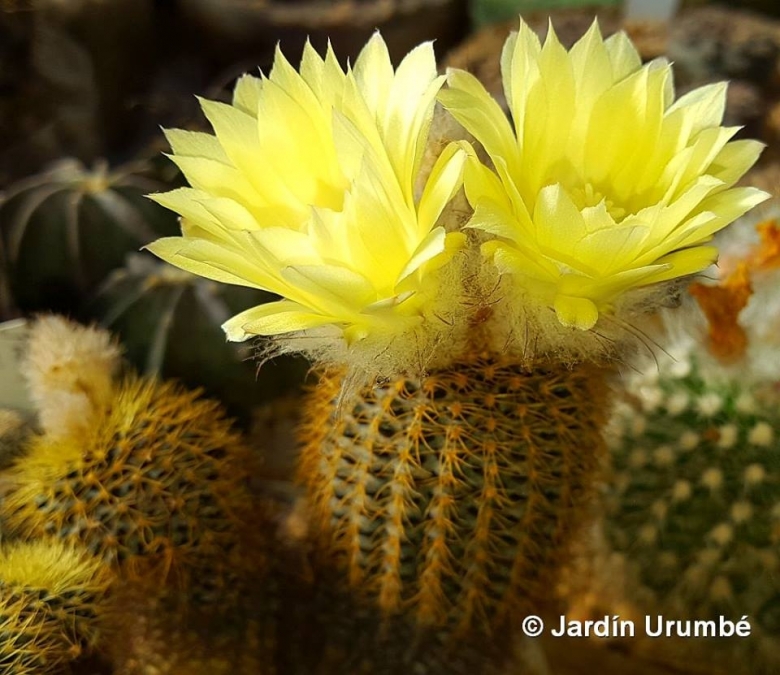
Astrophytum mammiferum (Frailea mammifera) Photo by: Alexander Arzberger
Origin and Habitat: Frailea mammiferaSN|3646]]SN|3646]] is found on north of Pedrito, Rio Grande do Sul, Brazil (extent of occurrence is 1,800 km2). The species is not abundant. The population is fragmented.
Altitude range: The plant is found at altitudes up to 100 metres above sea level.
Habitat and Ecology: The species grows on rocky outcrops and stoney fields in pampa grasslands. This habitat has very high potential to be used for agriculture. The major threats are grazing by cattle trampling, agriculture, forestry of Eucalyptus, invasive grasses and fire.
Synonyms:
See all synonyms of Frailea mammifera
back
Accepted name in llifle Database:Frailea mammifera Buining & Bredero in KrainzKakteen (H. Krainz) 50-51: CVIe fig. (1972).Synonymy: 3
Accepted name in llifle Database:Frailea mammifera subs. angelesiae R.Kiesling & D.MetzingCactaceae Syst. Init. 21: 18 (17; fig.). 2006 [May 2006]Synonymy: 2
back
Description: Frailea mammiferaSN|3646]]SN|3646]] is a miniature plant, usually solitary, or sometime basally branched. Two subspecies are recognized, the nominate form and subsp. angelsiae R.Kiesling & Metzing.
Stem: It is diminutive in size, subglobose or eventually shortly columnar, glossy dark green and purple, up to 3 cm in height, 2-2,5 cm in diameter.
Ribs: About 17, with round and tapering tubercles, with a very typical dark purple-brown lunate, markings beneath the areoles.
Areoles: Placed in the upper side of the tubercles.
Central spines: 2-4, erect, golden to brown, stout, 2-3 mm long.
Radial spines: 18-20, spreading, yellowish or whitish, thin, 1,5-2 mm long.
Roots: Fat central tap root.
Flowers: Infundibuliform, larger than the plant itself, sulphur-yellow, 2,5 cm in diameter; tepals abruptly acuminate, long and slender, stigma-lobes 5-7. But don't be disappointed when the easily produced buds fail to open. Fraileas are cleistogamous, meaning that their flowers produce seed without even opening. Without the need for pollination, the buds rarely reach full bloom and remain closed. They will open only in great heat in the hottest, brightest, afternoon sun, if at all.
Fruit: Up to 8 mm in diameter. Dry, indehiscent, that detaches easily, pericarp membranous, fragile that break easily, releasing the seed.
Remarks: This plant is short living (It only lives about 10-15 years).
Subspecies, varieties, forms and cultivars of plants belonging to the Frailea mammifera group
Notes: Some of the most sought-after Fraileas are those with dark purple “moons” under their areoles. Frailea cataphractaSN|21482]]SN|3597]] is the most typical example, but remarkable dark “moons” are also found in several other species like: Frailea mammiferaSN|3534]]SN|3646]], Frailea klinglerianaSN|25385]]SN|25385]], Frailea buenekeriSN|3646]]SN|3534]] and Frailea schlosseriSN|3597]]SN|21482]].
Bibliography: Major references and further lectures
1) Edward Anderson “The Cactus family” Timber Press, Incorporated, 2001
2) David R Hunt; Nigel P Taylor; Graham Charles; International Cactaceae Systematics Group. "The New Cactus Lexicon" dh books, 2006
3) Larocca, J. & Machado, M. 2013. Frailea mammifera. The IUCN Red List of Threatened Species. Version 2014.3. <www.iucnredlist.org>. Downloaded on 09 May 2015.
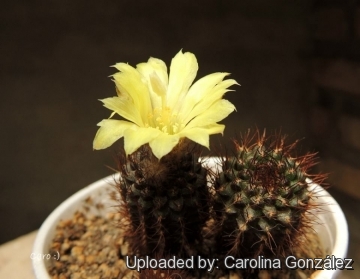 Astrophytum mammiferum (Frailea mammifera) Photo by: Carolina González
Astrophytum mammiferum (Frailea mammifera) Photo by: Carolina González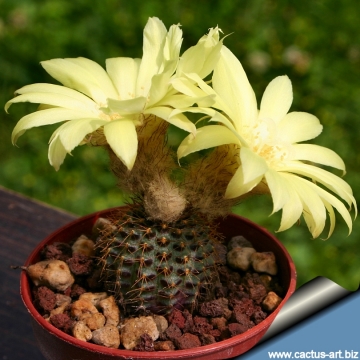 Astrophytum mammiferum (Frailea mammifera) Photo by: Cactus Art
Astrophytum mammiferum (Frailea mammifera) Photo by: Cactus Art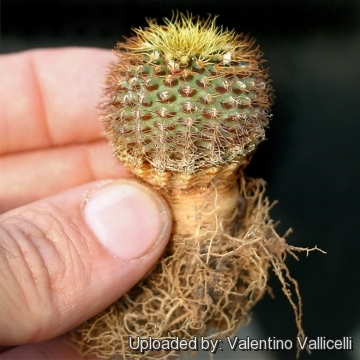 - HU345 ( Leopoldo Horst) Locality: North of Dom Pedrito, Rio Grande do Sul, Brazil
Altitude: 250m. It is a tiny cactus with sulphur-yellow flowers larger than the plant itself. These fully developed flowers are indeed quite rare, and will open only in great heat or on the hottest, brightest, sunny afternoon , if at all. (Frailea mammifera) Photo by: Valentino Vallicelli
- HU345 ( Leopoldo Horst) Locality: North of Dom Pedrito, Rio Grande do Sul, Brazil
Altitude: 250m. It is a tiny cactus with sulphur-yellow flowers larger than the plant itself. These fully developed flowers are indeed quite rare, and will open only in great heat or on the hottest, brightest, sunny afternoon , if at all. (Frailea mammifera) Photo by: Valentino Vallicelli Astrophytum mammiferum (Frailea mammifera) Photo by: Cactus Art
Astrophytum mammiferum (Frailea mammifera) Photo by: Cactus Art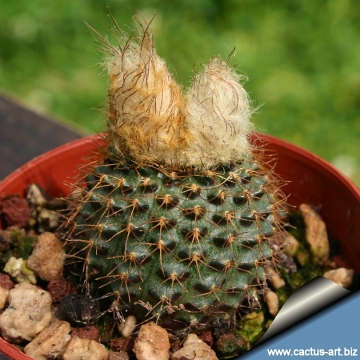 Astrophytum mammiferum (Frailea mammifera) Photo by: Cactus Art
Astrophytum mammiferum (Frailea mammifera) Photo by: Cactus Art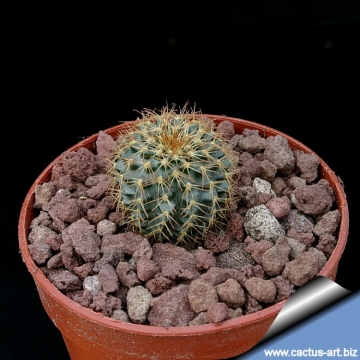 Astrophytum mammiferum (Frailea mammifera) Photo by: Cactus Art
Astrophytum mammiferum (Frailea mammifera) Photo by: Cactus Art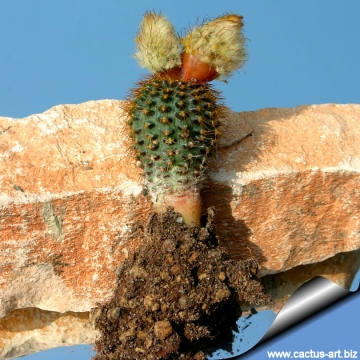 Astrophytum mammiferum (Frailea mammifera) Photo by: Cactus Art
Astrophytum mammiferum (Frailea mammifera) Photo by: Cactus Art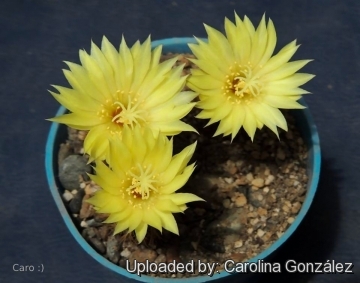 Astrophytum mammiferum (Frailea mammifera) Photo by: Carolina González
Astrophytum mammiferum (Frailea mammifera) Photo by: Carolina GonzálezCultivation and Propagation: Grow them in rich, porous soil, and let them dry out between waterings. These plants need a minimum temperature of 5-10° C (but occasionally temperatures of a few degrees below 0° are not dangerous) .
Sun Exposure: It enjoys full sun, and it can take on a near black appearance when kept in bright light. In a shaded position the plants grow faster, but are not flat shaped or dark coloured.
Characteristically, during the dry season plants retract completely under the ground, both in the wild and in cultivation too.
Propagation: With fresh harvested seeds or (rarely) by grafting.
Your Photos
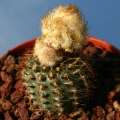
by Valentino Vallicelli




















